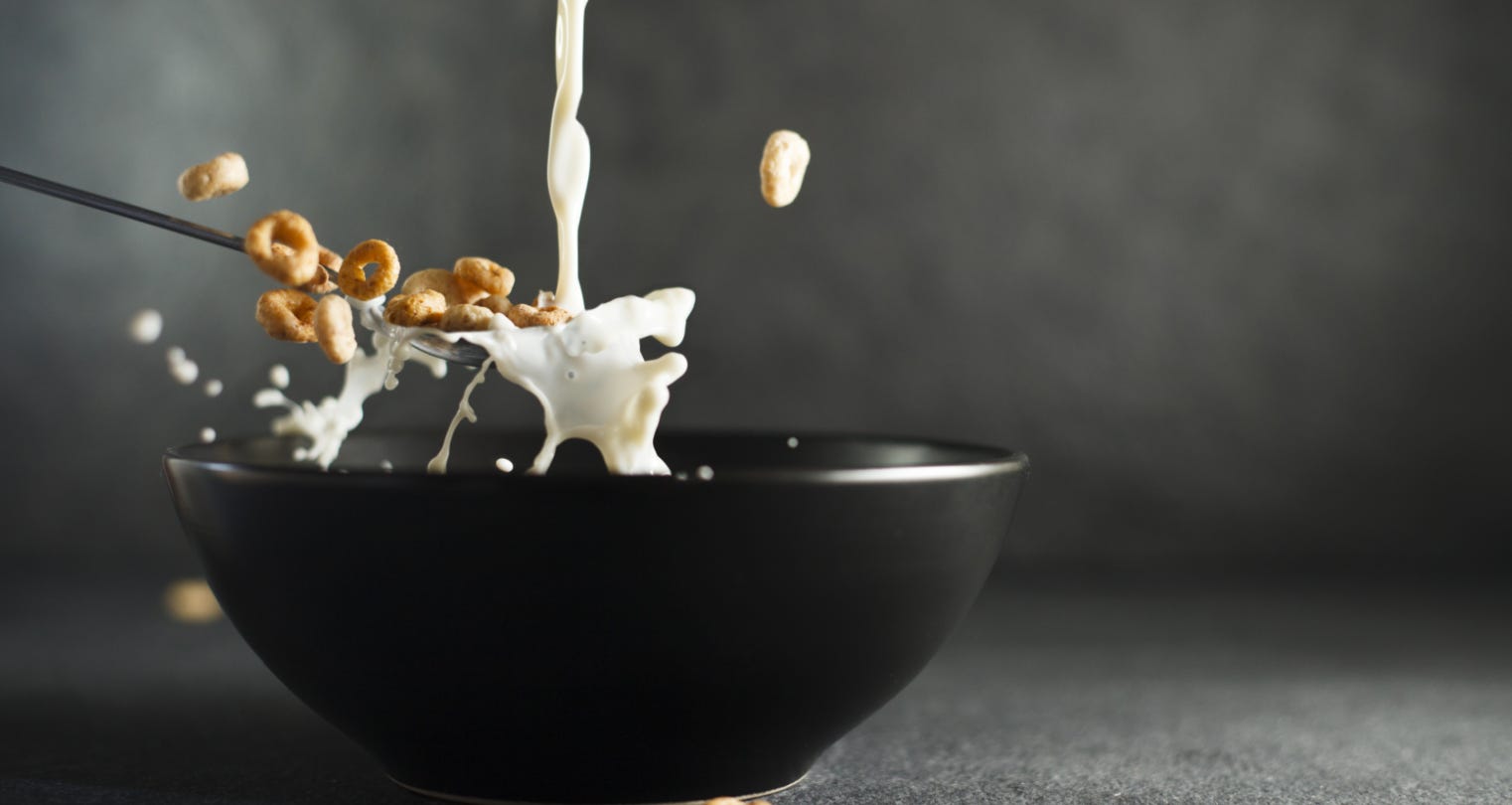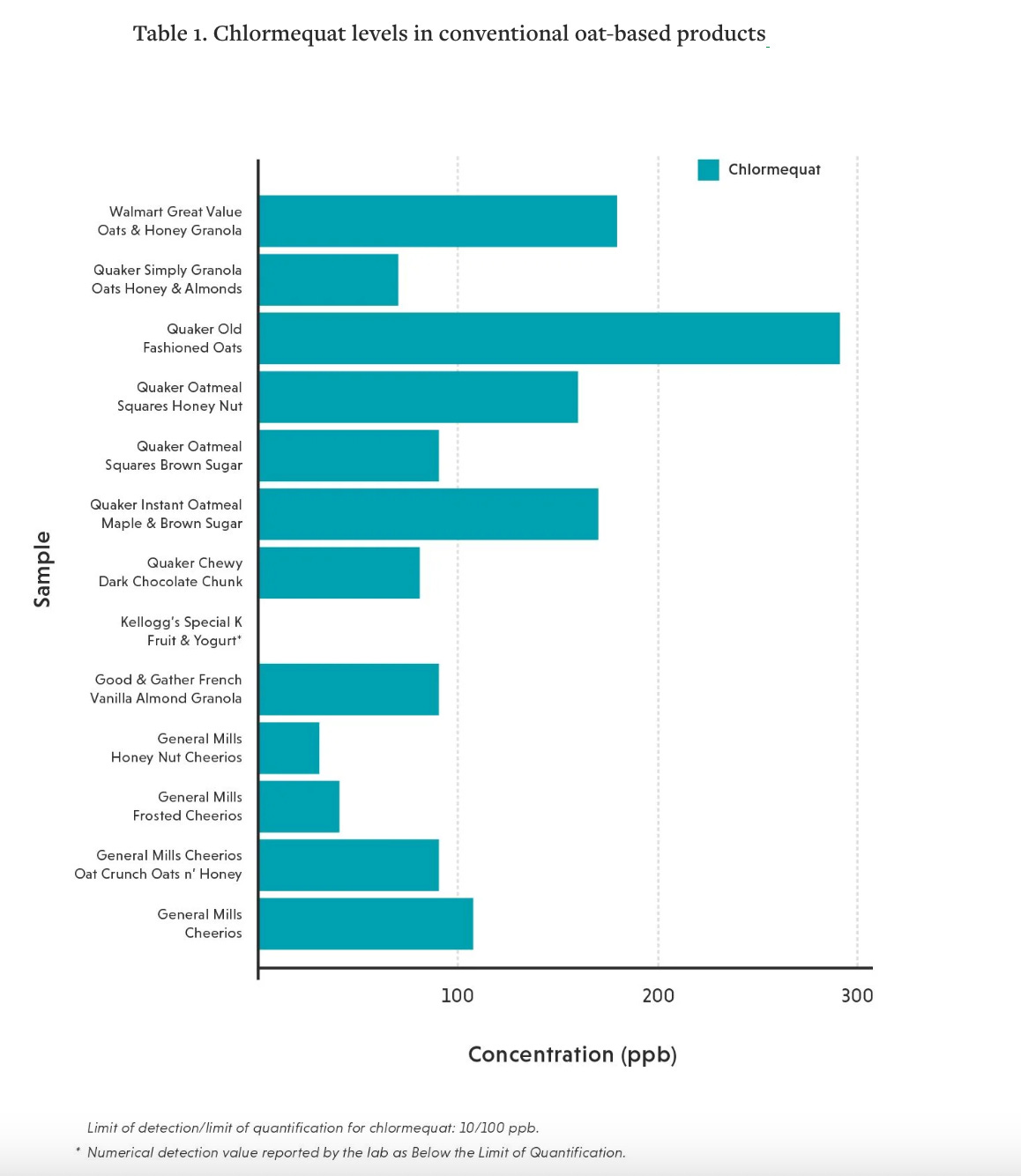|
80% of Americans Test Positive for Highly Toxic Pesticide Found in Common Foods
Out of 25 samples of non-organic oat-based foods from U.S. grocery stores, including Quaker Oats and Cheerios, 92% contained a pesticide called chlormequat.
A pesticide linked to developmental and reproductive toxicity may be lurking in your food, especially non-organic oat and wheat-based products, according to a new study by the Environmental Working Group (EWG).
In a February paper published in the Journal of Exposure Science & Environmental Technology, researchers found that 80% of adults, or 4 out of 5 Americans, tested positive for a harmful pesticide called chlormequat.
The EWG’s study measured levels of chlormequat in 96 urine samples from individuals in three geographic regions within the U.S. from 2017 to 2023, as well as levels of chlormequat in oat and wheat-based products purchased in the U.S.
Researchers detected the chemical in 77 of 96 urine samples, with levels significantly higher in 2023 compared to previous years, suggesting consumer exposure to chlormequat could be on the rise.
Of 25 samples of non-organic oat-based foods from U.S. grocery stores, including Quaker Oats and Cheerios, 92% contained a pesticide called chlormequat.
In EWG-commissioned tests by a third-party laboratory, chlormequat was found in all but one of 13 non-organic oat-based cereals, granola, and other products. Nearly all the products contained chlormequat levels higher than the amount the group considers safe for children’s health.
Source: Environmental Working Group
The only two products that did not have detectable levels of the pesticide were 365 Whole Foods Market Fruit & Nut Muesli and Kellogg's Special K Fruit & Yogurt.
Studies Link Chlormequat to Reproductive Harms
The EWG is a nonprofit organization focusing on outdated legislation, harmful agricultural practices, and industry loopholes that “pose a risk to our health and the health of our environment.”
According to the National Library of Medicine, chlormequat is an agricultural chemical first registered in the U.S. in 1962 as a plant growth regulator. Although it is only allowed for use on ornamental plants in the U.S., the good people at the Environmental Protection Agency (EPA) in 2018 started allowing foods to be imported into the U.S. that had been treated with chlormequat. They’re now poised to allow the pesticide to be used in U.S. crops and at greater levels in imported grains.
Animal studies link chlormequat to reduced fertility, reproductive harms, and altered fetal growth," the group said in a new release.
More recent reproductive toxicity studies show the pesticide may delay the onset of puberty, reduce sperm motility, decrease the weight of male reproductive organs, reduce testosterone levels, and dysregulate fetal growth and metabolism during pregnancy.
In EPA documents on chlormequat’s toxicity, studies by chlormequat manufacturers show it may harm the nervous system in adult rats, mice, and dogs.
Although chlormequat is currently only allowed for use on ornamental plants in the U.S, the EPA in 2018 published acceptable food tolerance levels for chlormequat chloride in imported oats, wheat, barley, and some animal products, which opened the door for the pesticide to enter the U.S. food supply for both humans and animals.
Now the agency wants to not only increase the amount of chlormequat for imports, they want to allow farmers to use it on their crops. Although the EPA says it’s reviewing EWG’s study, it is also considering an application by Taminco, a subsidiary of Eastman Chemical Company that manufactures chlormequat, that would allow U.S. farmers to use the chemical on their crops.
The company says chlormequat helps increase crop yields by making the grains stand upright when the chemical is applied during the growing process so it’s easier to harvest. In the European Union, UK, and Canada, chlormequat is already authorized for use in food crops such as wheat, oats, and barley.
Even a Little Toxic Pesticide Residue is Too Much
The highest levels of pesticide residue currently allowed in imported wheat, barley, and oats are 3 parts per million (ppm), 2 ppm, and 10 ppm, respectively. In 2021, Taminco asked the EPA to allow 8 ppm of chlormequat residue for barley. The company updated its request in 2023, asking the EPA to allow 40 ppm of chlormequat for oats, 5 ppm for wheat and triticale, and 0.2 ppm for meat byproducts such as milk, dairy, and eggs.
The EPA, in April 2023, started collecting public comments on its proposed decision to allow chlormequat to be used by farmers to “increase crop yields.” The agency is also considering increasing the permitted amount of the chemical in imported oats.
Before issuing its proposed decision, the EPA claims it assessed whether exposures to chlormequat would cause” unreasonable adverse effects” to humans or the environment. Its review found no “dietary, residential, or aggregate (i.e., combined dietary and residential exposures) risks of concern.”
The EWG, in its study, claims the EPA’s “research” disregarded critical studies on chlormequat toxicity in animals, especially those involving the male reproductive system and developing fetus.
Chlormequat's effect on fertility is significant given declining birth rates in the U.S. According to data by the Centers for Disease Control and Prevention, infertility affects 1 in 5, or 19%, of women aged 15 to 49 with no prior births. About 1 in 4 women, or 26%, may get pregnant but have trouble carrying a pregnancy to term. Approximately 9% of men in 2018 struggled with infertility.
Why is this a problem? American children live on Cheerios and common cereals containing oats, wheat, and other grains that, unbeknownst to parents, contain harmful pesticide residue. A little pesticide residue may not kill you but continue to consume foods that contain pesticide residues over time, and the amount will add up to a level that could.
I can’t do it without you. Consider joining me to raise awareness for the issues the mainstream media won’t cover and empower others with the information and courage they need to leave the herd.
X: @megan_redshaw
Instagram: megan.redshaw
Telegram: @realmeganredshaw
You’re currently a free subscriber to Megan Redshaw's Substack. Upgrade your subscription to get the full experience and support Megan’s work.

